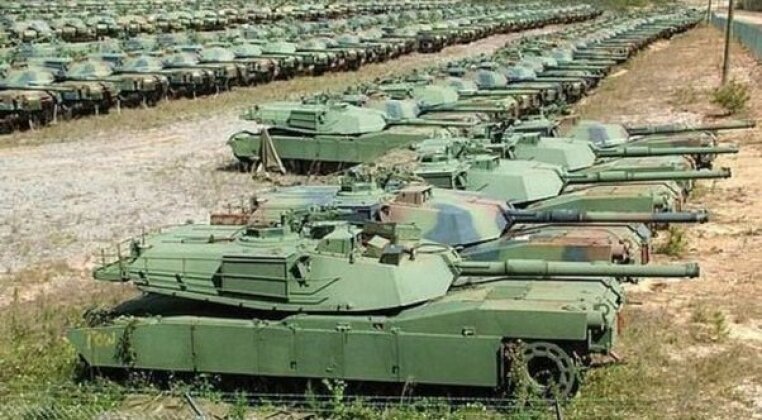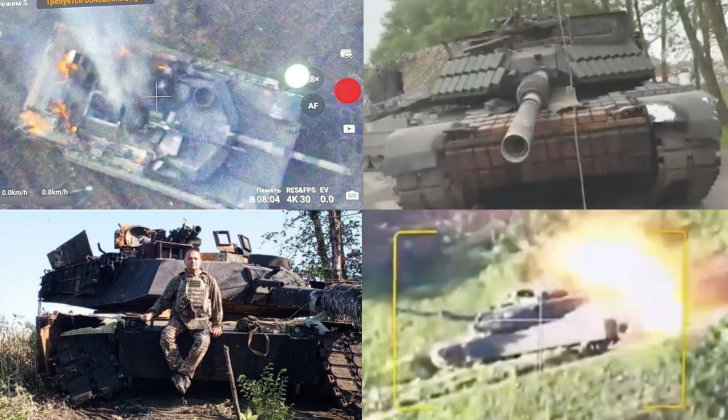News
America’s New M1E3 Abrams is the Most Revolutionary Western Tank of the Past 50 Years
The U.S. Army is working to ensure the completion of a pre-prototype of its next-generation main battle tank, the M1E3 Abrams, by the end of the year. The vehicle’s development is the result of a decision taken by the Army in 2023 to terminate plans for further incremental upgrades to the M1A2 Abrams, and instead pursue much more revolutionary and far reaching design changes. This decision is thought to have been heavily influenced by the perceived inadequacy of conventional Western tank designs, with the M1A1 Abrams and Leopard 2A6 having both proven to be highly vulnerable in the Ukrainian theatre resulting in both widespread complaints by Ukrainian personnel and rapid combat losses. Where prior design changes to the Abrams since the tank entered service in 1980 have been relatively conservative, the M1E3 variant is expected to bring the tank into the fourth generation with many common design features to China’s new Type 100 and Russia’s unrealised T-14 tank.
The M1E3 will be the first American tank, and the second Western tank after the French Leclerc, to integrate an automatic loader, which will facilitate a crew reduction from four three personnel and an increased rate of fire. Such loading systems were pioneered by the Soviet T-64 in 1964. The use of an automatic loader and a remote controlled turret will allow all crew to be housed in a single protective capsule, which is a configuration pioneered by the T-14 and Type 100 that Western analysts have pointed to as the future of tank design. Where the Abrams was previously by far the heaviest tank in the world, with many of its configurations weighing over 80 tons, the M1E3 variant will have a significantly reduced 60 ton weight, allowing for much higher levels of mobility. This will mirror the course taken by the Type 100, which is significantly lighter than prior Chinese tanks at around 40 tons.

The M1E3 will compensate for significant reductions to armour by integrating more advanced active protection systems much as the Type 100 has done. Another notable change that follows similar steps taken by the Type 100 is the use of a hybrid powerplant, which is expected to provide 40 percent greater fuel efficiency than the current famously fuel hungry gas turbine engine. The deep design changes mean that the M1E3 will represent a pivotal turning point in Western tank design, with China’s investment in the Type 100 to already bring the vehicle into active service expected to further strengthen the consensus in the West regarding the veracity of the new design priorities made by the program.These changes represent the most significant shift in Western thought on tank designs in at least half a century, since the Abrams, the German Leopard 2 and the British Challenger third generation tanks were conceptualised in the mid-1970s.

Commenting on the urgency of the new tank’s development, the U.S. Army’s Chief Technology Officer and Senior Advisor to the Chief of Staff for Science and Technology Dr. Alex Miller observed: “Very long story short, when we went – when the Chief [of Staff of the Army Gen. Randy George] and I went to Detroit, 18 months ago, the PEO team, at the time, said that we would not see the M1E3 until 2032… And we said no.” “I want a tank by the end of the year, and we need a platoon by the end of next year. We understand there’s a lot of process things that we, the government, impose. So things like critical design review, things like final design review, those are government processes,” he added. To place the urgency of the situation facing the current American tank fleet in perspective, by early June 2025 the Ukrainian Army was assessed to have lost 87 percent of the American-supplied vehicles, with 27 of the 31 Abrams tanks destroyed or captured, despite prior Western expectations that the vehicles could represent a game changer in the theatre.












